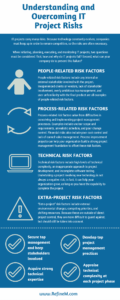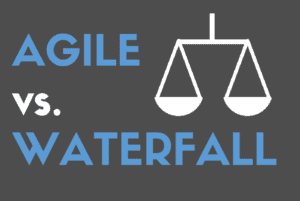Understanding and Overcoming IT Project Risks [Infographic]

Many high-profile IT projects face their own risks and challenges from conception to the final stages. Perhaps the addition of technology into the mix makes these projects particularly challenging, but if project managers and teams are not careful, all of their hard work could result in a failed project and disappointment from all involved. When considering management of IT projects, two questions must be considered: How and why do IT projects fail, and what can you do to prevent this failure? In this blog post and infographic, we explore the top four types of IT project-related risk factors to look out for and provide strategies to put in place that will help your teams overcome threats to your IT projects.Continue reading→
Five Ways to Foster Project Management Innovation

Project teams have a lot to deal with on projects. They will have to navigate multiple problems, such as risks becoming issues, costs exceeding budget, and schedules slipping, on any given project. The top notch project managers and teams are skilled and experienced at coming up with innovative solutions to these problems. How can any project manager or team acquire this skill? In this post, we describe five ways to improve creativity on project teams to foster project management innovation. These steps range from building the foundation through organizational structure and culture to trying out agile practices.
4 Project Management Software Tools to Consider for Your Teams

Project management processes can be implemented with only simple tools that project managers and team members are likely to have, such as templates for Microsoft Office programs or Google Docs. For some project managers and teams who have grown out of Microsoft Office, a software tool for the sake of automating part of the workflow, such as JetPack Workflow, may be useful. Many tools are available on the market for teams or companies of various sizes, and some are also cloud-based for ease of access by everyone on the team.
5 Things Needed to Be Agile Ready

5 W’s of the Project Management Professional (PMP)® Exam [Infographic]

5 Habits of Highly Effective Project Managers

5 Key Initiatives to Make Your PMO Shine

One of the key measures of a project management office (PMO) should be whether project delivery capability improves as a result of its existence. The PMO contributes to successful project delivery by providing standards for project management, empowering the organization’s project managers, and increasing the visibility of project management. To accomplish these key goals and remain relevant, PMOs need to be dynamic and proactive rather than static and reactive.
Turning Project Management Into a Competitive Advantage

According to PMI’s 2016 Pulse of the Profession report, organizations lose $122 million on average for every $1 billion spent on projects, an increase from the last measure in 2014.
Although the waste could be worse, organizations should examine ways to further reduce that waste. PMI’s (2014) recommendations for minimizing these losses include greater coupling of projects with organizational strategy and a greater organizational agility that includes more emphasis on customers and processes. In this blog post, we will provide commentary on both the 2014 and 2016 reports and offer additional solutions from the perspective of our project management experience.
Agile Vs. Waterfall

How do Agile methods differ from waterfall methods? In this blog post, we will answer that question and we will present the key differences between Agile and waterfall. As the traditional method used to deliver projects, waterfall tends to be the more common and generic way of managing projects. Agile is typically used with software projects, but can also apply to other projects. Depending on the type of project, Agile may or may not be a good fit for non-software projects. With other types of projects, you might even be able to integrate Agile and waterfall methodologies together to create a dynamic way of approaching a specific project.
Changing Careers: Business Analyst to Project Manager

